How To Treat And Prevent A Chafing Rash Naturally
Get instant relief from rashes and discomfort with simple and effective home remedies.
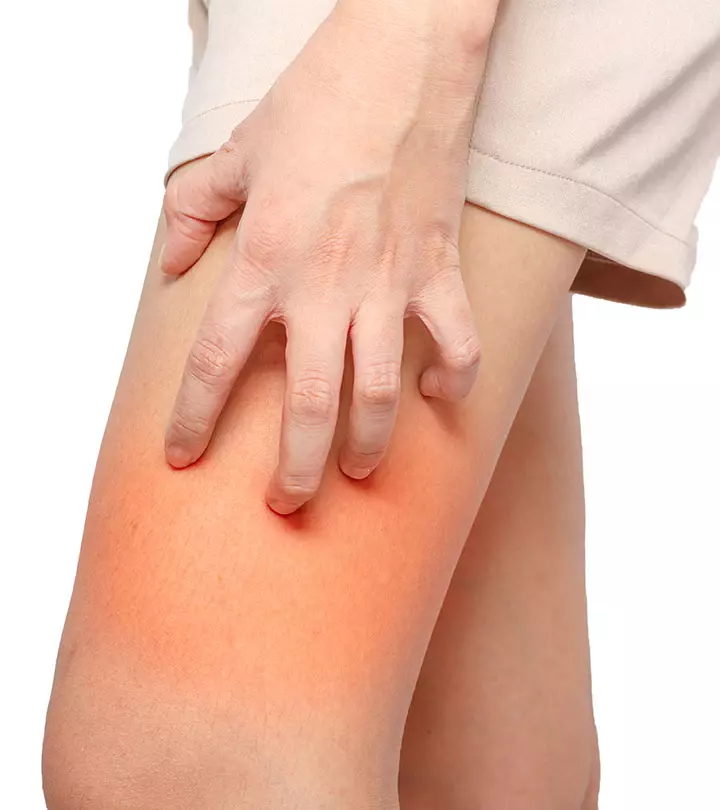
Image: Shutterstock
Are you experiencing a chafing rash? Worry not! Now there are remedies for chafing that can provide instant relief to you. Chafing is a term used to describe skin rashes that can occur anywhere on the body due to friction. Whether you got soaked in the rain or simply sweated it out in a pair of body-hugging shorts, you may have experienced the terrible discomfort that a chafing rash entails. The chafing rash may also occur where skin rubs against skin or clothing, such as armpits, thighs, and under breasts. Continue reading to learn more about how to heal a chafing rash naturally and how to avoid it the next time.
In This Article
What Is Chafing?
Chafing is a very common skin problem. You must have observed that prolonged scratching of your skin due to an irritating fabric, friction, or moisture causes your skin to burn and sting. This results in skin rashes, which are referred to as chafing rashes.
Excessive scratching of your skin may result in the following signs and symptoms.
Key Takeaways
- Chafing causes red and inflamed skin that leads to itching and swelling.
- The rubbing of skin against other materials leads to chafing.
- Apply aloe gel or diluted essential oils to soothe the affected area and reduce swelling.
- Wear breathable and well-fitted clothes to avoid friction with your skin.
- Consume a nutrient-rich diet to boost your immune system and prevent infections.
Signs And Symptoms Of Chafing
Chafing is often characterized by the onset of skin rashes. These rashes can be:
- Itchy
- Red and inflamed
- Burning or stinging
More severe cases of chafing may cause your skin to:
- Swell
- Crust
- Bleed
Chafing rashes have more to do with rubbing your body parts against each other or against your clothing. And that takes us to the factors that cause the rashes.
Causes And Risk Factors For Chafing
Chafing mostly occurs when:
- Your skin rubs against itself, especially when wet.
- The fiber of your clothing is irritating, and your skin rubs against the cloth.
- Your skin or clothing is wet.
Some factors can increase the risk of chafing. They are:
- Participation in endurance sports like biking and running.
- Athletics
- Obesity
- Breastfeeding
- Wearing soiled diapers for too long – This is true especially in the case of infants and older adults who use diapers.
- Wearing a skirt – Without pants or leggings to protect your legs, your thighs may rub against each other and develop chafing rashes.
- Wearing ill-fitting clothes – When a loose piece of clothing rubs against your skin, it can cause rashes.
Ignoring chafing and continuing friction may worsen the affected area and even lead to complications like skin infections. So, it is important to address chafing as soon as it happens. If you need to know how to treat (and prevent) chafing rashes, keep reading!
Home Remedies To Treat Chafed Skin
- Aloe Vera
- Olive Oil
- Essential Oils
- Vaseline
- Coconut Oil
- Epsom Salt Bath
- Oatmeal Bath
- Turmeric
- Indian Lilac
- Cold Compress
- Cornstarch
- Baking Soda
- Apple Cider Vinegar
- Vitamins
1. Aloe Vera
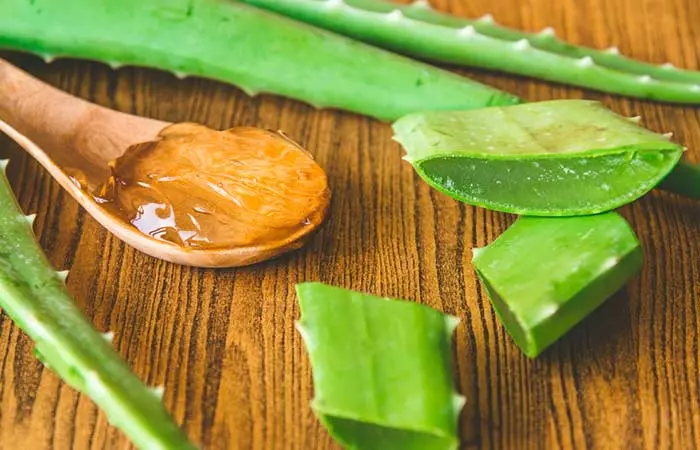
You Will Need
1 tablespoon of aloe vera gel
What You Have To Do
- Take an aloe vera leaf and extract a tablespoon of gel from it.
- Apply the gel evenly to the chafed skin and leave it on for about 20 to 30 minutes.
- Wash with water.
Why This Works
Aloe vera speeds up the healing of skin wounds, which explains its efficiency in treating chafing.
The anti-inflammatory property of aloe aids the healing (1).
2. Olive Oil
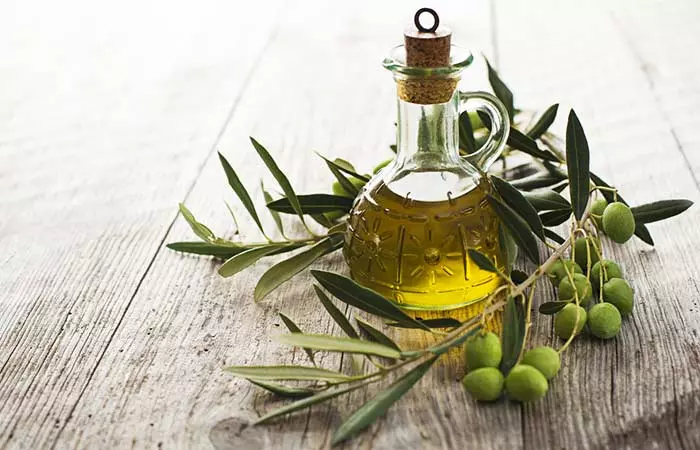
You Will Need
1 tablespoon of virgin olive oil
What You Have To Do
- Take some virgin olive oil in your palms.
- Gently massage it into the affected area.
- Leave it on for 30 minutes and wash it off.
- You can also apply olive oil to the affected area at night, before going to sleep.
Why This Works
Olive oil is a powerful antioxidant that speeds up the healing of the affected area with its protective and healing properties
(2).
3. Essential Oils
a. Tea Tree Oil
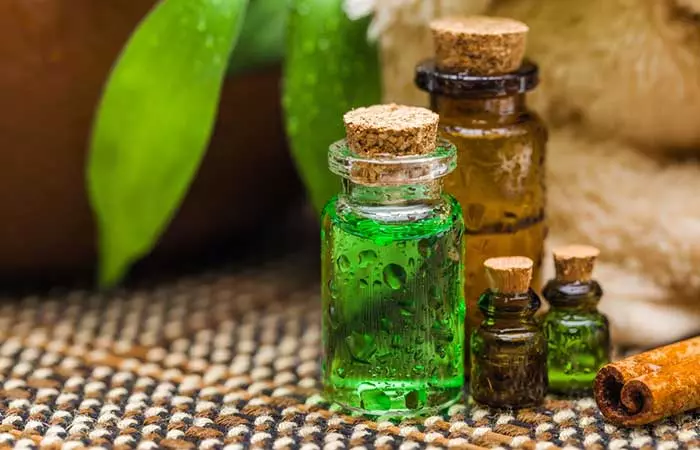
You Will Need
- 6 drops of tea tree oil
- 1 teaspoon of coconut oil
What You Have To Do
- Mix six drops of tea tree oil with a teaspoon of coconut oil.
- Apply this concoction to the affected area.
- Leave it on until it dries on its own.
- Reapply as required.
Why This Works
The anti-inflammatory and antimicrobial properties of tea tree oil treat chafing rashes and prevent any possible infections
(3).
b. Calendula Oil
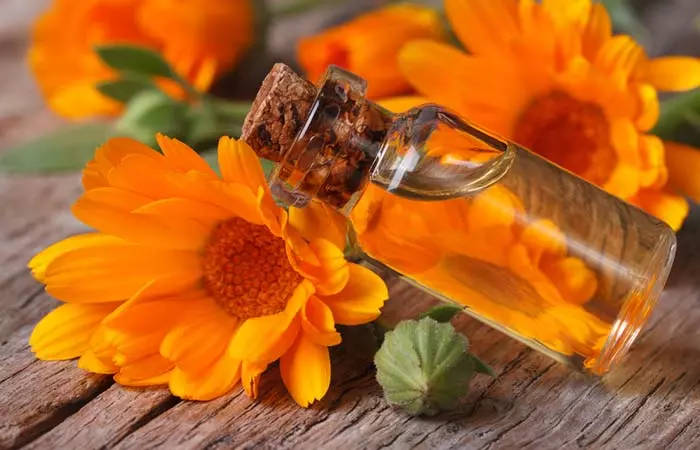
You Will Need
- 7 drops of calendulai A mediterranean flowering plant that has wound-healing, anti-inflammatory, and antioxidant properties. oil
- 1 teaspoon of coconut oil (or any other carrier oil)
What You Have To Do
- Add seven drops of calendula oil to a teaspoon of any carrier oil.
- Mix well and apply it to the affected skin.
- Leave it on for 30 minutes and rinse off with water.
- You can also allow it to evaporate naturally.
- Repeat this multiple times in a day.
Why This Works
Calendula oil has anti-inflammatory properties that can accelerate wound healing
(4). If oil is not available, calendula cream also has the same effect and can be used alternatively.
4. Vaseline
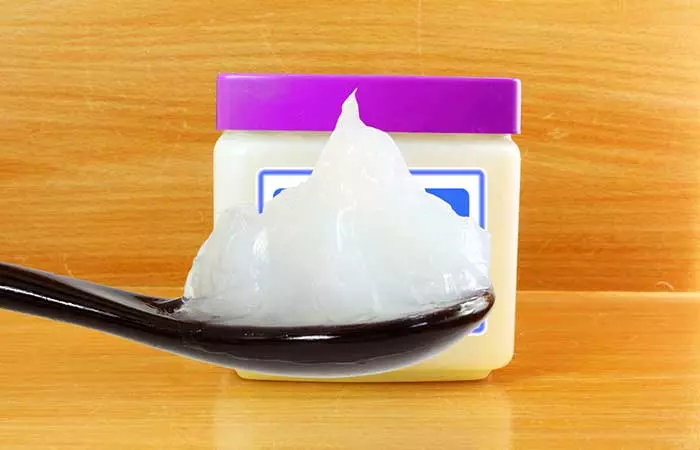
You Will Need
Vaseline or petroleum jelly (as required)
What You Have To Do
- Take a little Vaseline and apply it to the affected area.
- Reapply as necessary.
Why This Works
Vaseline keeps your skin well moisturized. It also forms a protective layer on the skin and prevents further infection in the affected area (5), (6).
5. Coconut Oil
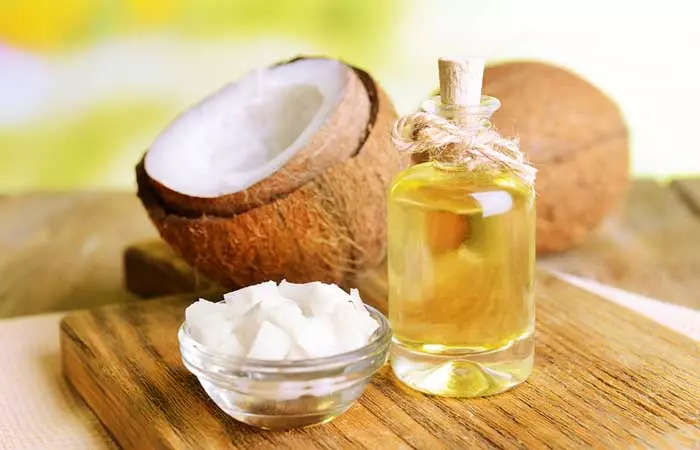
You Will Need
1 tablespoon of virgin coconut oil
What You Have To Do
- Take a little coconut oil in your palms and spread it all over the affected skin.
- Allow the oil to dry on its own.
- Reapply the oil as and when required.
Why This Works
The medium-chain fatty acids in coconut oil keep your skin lubricated and relieve inflammation and swelling (7), (8).
6. Epsom Salt Bath
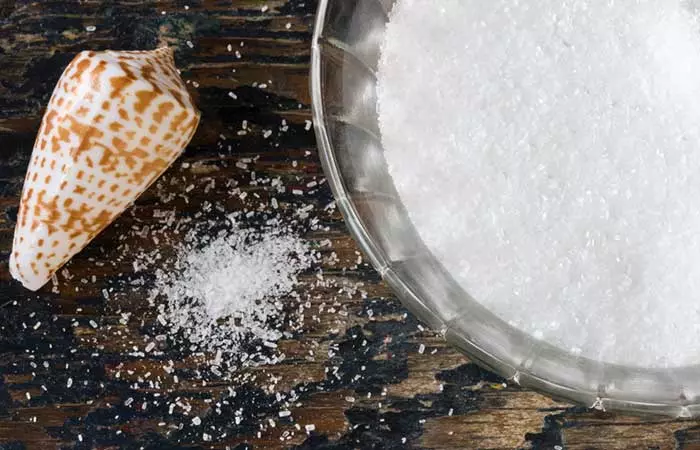
You Will Need
- 1 cup of Epsom salt
- Water
What You Have To Do
- Add a cup of Epsom salt to a tub of water.
- Mix well and soak in it for 20 to 30 minutes.
- Pat your skin dry.
- You can also soak in an Epsom salt bath before you go to bed.
Why This Works
Epsom salt is rich in magnesium, which reduces inflammation and treats the symptoms of chafing (10).
7. Oatmeal Bath
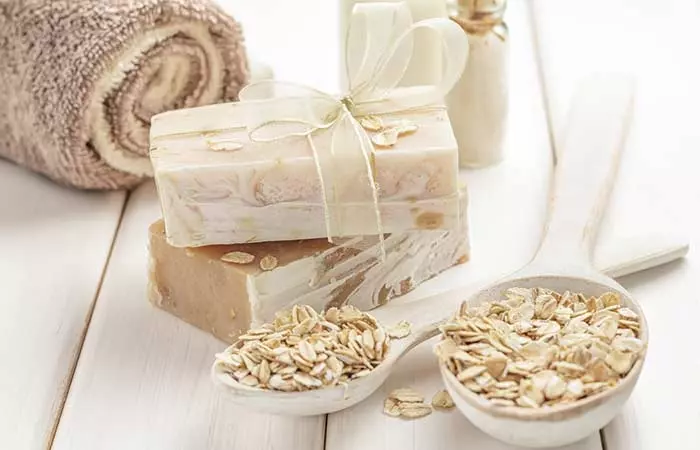
You Will Need
- 1-2 cups of oatmeal
- Water
What You Have To Do
- Add one to two cups of oatmeal to a tub filled with water.
- Soak in it for 20 to 30 minutes and pat your skin dry.
- You can also replace your loofah with some oatmeal wrapped in a muslin cloth.
- Do this 2 to 3 times.
Why This Works
The excellent anti-inflammatory and anti-itch action of oatmeal work wonders in healing chafing (10), (11).
8. Turmeric
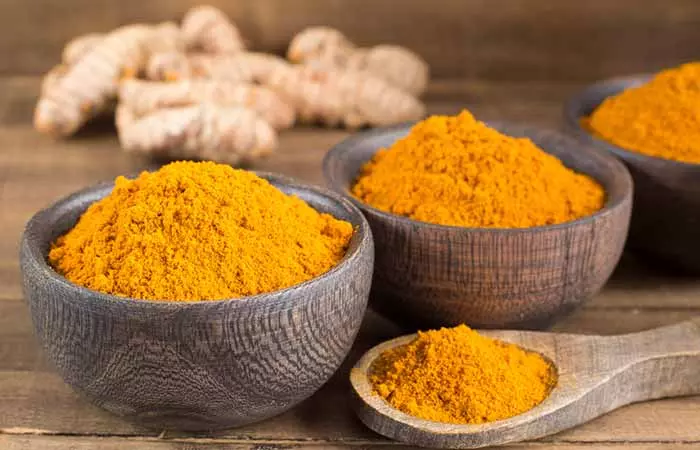
You Will Need
- 2 teaspoons of turmeric powder
- Water (as required)
What You Have To Do
- Mix two teaspoons of turmeric powder with enough water to form a thick paste.
- Apply this paste all over the chafed area.
- Allow it to dry for about 30 minutes before rinsing it off.
- Repeat this several times during the day.
Why This Works
The curcumin in turmeric can help in treating chafed skin with its anti-inflammatory properties (12).
9. Indian Lilac (Neem)
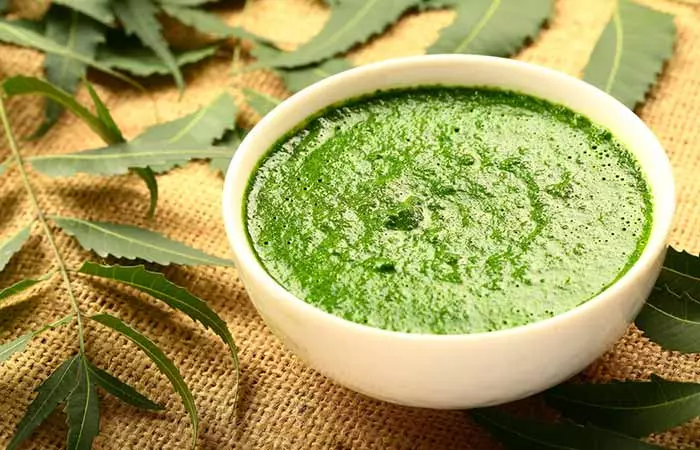
You Will Need
- A handful of neem leaves
- Water (as required)
What You Have To Do
- Take a handful of neem leaves and wash them thoroughly.
- Grind them with water.
- Apply the neem blend to the affected skin.
- Leave it on for 30 minutes and wash it off.
- Repeat as and when necessary or until you notice an improvement.
Why This Works
The methanolic compounds in neem help fight the inflammation, itchiness, and swelling associated with chafing (13).
10. Cold Compress
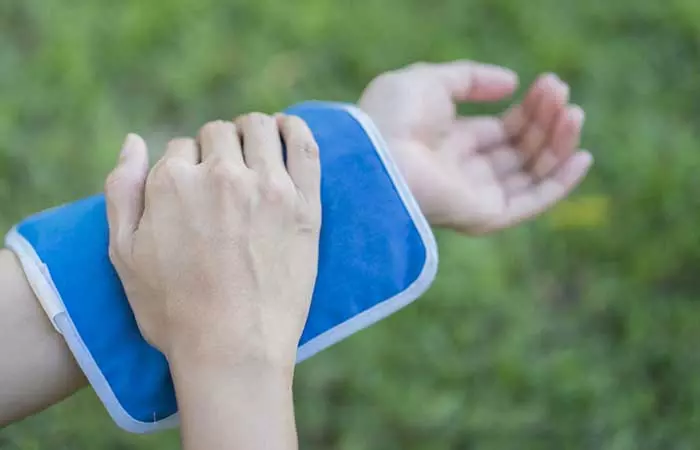
You Will Need
A cold compress
What You Have To Do
- Take a cold compress or some ice wrapped in a clean cloth and apply it directly to the chafed skin.
- Hold the compress on your skin for about 2 to 3 minutes and remove.
- Repeat thrice.
- You can apply the ice compress at regular intervals for faster recovery.
Why This Works
The anti-inflammatory action of cold compresses offers relief from itching and inflammation in the affected area (14). Cold compress is also effective if you are looking for how to get rid of heat bumps or rashes.
11. Cornstarch

You Will Need
Cornstarch (as required)
What You Have To Do
- Sprinkle a little cornstarch on the moist and affected areas of your skin.
- You can also apply a layer of Vaseline over this.
- Repeat as necessary.
Why This Works
Cornstarch helps in keeping your skin dry and sweat-free. This remedy can be especially effective for minimizing friction and rashes due to too much sweat or moisture (15).
12. Baking Soda
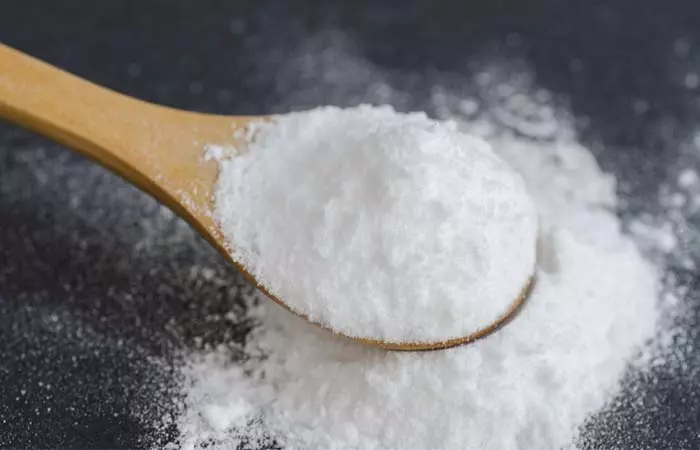
You Will Need
- 2 teaspoons of baking soda
- Water (as required)
What You Have To Do
- Mix baking soda with water to form a thick paste.
- Apply it to the chafing rash.
- Leave it on for about 20 to 30 minutes and rinse it off.
- Do this multiple times.
Why This Works
Two properties of baking soda play a role in the treatment of a chafing rash. Firstly, the alkalinei The nature of a substance that can dissolve in water, produce salts when combined with acids, and reduce the acidity of acids. nature of baking soda restores the pH of your skin and accelerates healing. And secondly, baking soda is a natural antiseptici A property or drug used to prevent any kind of microbial infections by killing the microbes that cause them. that can prevent further infections (16), (17).
13. Apple Cider Vinegar

You Will Need
- 1 tablespoon of apple cider vinegar(ACV)
- 1 glass of water
- Cotton pads
What You Have To Do
- Take a tablespoon of apple cider vinegar and add it to a glass of water.
- Mix well and soak a cotton pad in it.
- Apply the mixture to the affected skin.
- Allow the apple cider vinegar to dry on its own.
- Repeat at regular intervals.
Why This Works
ACV has anti-inflammatory and antimicrobial properties, which can work wonders in treating your chafed skin and its symptoms (18), (19). These properties can be credited to the presence of acetic acid in ACV.
14. Vitamins
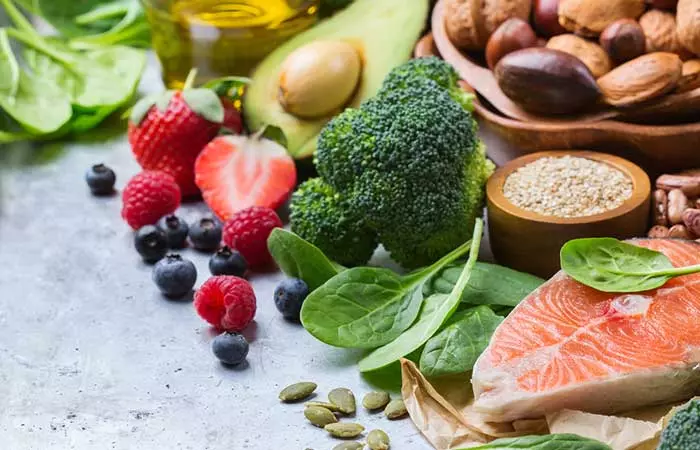
Individuals suffering from chafed skin must include a diet rich in vitamins A and C. These vitamins work as antioxidants that are extremely beneficial for your overall health, including chafed skin (20), (21). Also, vitamin C is known to boost your immunity and can thus protect your skin from further infections (22).
You must consume foods like spinach, kale, carrots, broccoli, tomatoes, cucumbers and guava to get the required amounts of vitamins A and C naturally. You can also take additional supplements if required, after consulting with your doctor.
If the chafing rash does not improve within a few days even after implementing home remedies, consult a doctor immediately. You should do the same if you notice signs of infection like increased pain, swelling, redness, foul odor, fever, or pus formation.
 Did You Know?
Did You Know?You can also follow the below-mentioned tips to prevent recurrence of this condition.
Prevention Tips
- Follow a healthy diet rich in all the essential nutrients.
- Use a deodorant to avoid sweating too much.
- Use a good moisturizer on the chafing-pronei A tissue, mostly skin, which is in continuous contact with wetness, an irritated cloth, or some friction that can eventually cause a tear. areas of your skin.
- Wear clothing that allows your skin to breathe, especially while exercising. You may choose clothes made of rapid-drying and moisture-wicking fabrics
- Wear well-fitting clothes to avoid friction with your skin.
- Do not stay in wet clothes for too long.
 Quick Tip
Quick TipDina Gold, a fitness blogger, shared tips on how she avoided chafing from indoor cycling. She wrote, “Exfoliate (in the shower) and moisturize daily. I use a sugar scrub and a shea-based moisturizer (i).”
Apart from home remedies, there are some other treatments you may use to manage chafing. Check them out in the next section.
Some Other Treatments For Chafing
- Wear Moisture-Wicking Shorts
Cool and soft fabrics can help reduce moisture and sweat. Snuggly fit shorts also reduce skin-to-skin contact and prevent further chafing and discomfort while walking or running.
- Use Medical Anti-Chafing Products
Ointments containing zinc gluconate‐taurine complex and zinc oxide can be used to reduce the inflammation. It is useful for skin that is exposed to friction, heat, and humidity (23).
- Apply Diaper Rash Cream
Anecdotal evidence suggests that using zinc-based diaper rash cream may help soothe irritated and chafed skin.
These are a few quick and useful tips that can help you steer clear of chafing.
Infographic: Natural Remedies For Chafed Skin
The pain of chafed skin can sometimes be unbearable. The burning sensation makes it hard to focus on anything. However, some home remedies help in such times. Illustration: StyleCraze Design Team
Look at the infographic below to learn the easiest and fastest ways to treat chafed skin at home.
Chafing rashes occur due to friction on the skin and may appear red and inflamed, with crusting, swelling, or bleeding in severe cases. In addition, these rashes may cause itchiness, burning, or a stinging sensation that can be alleviated using home remedies for chafing. Aloe vera gel, essential oils, olive oil, oatmeal bath, vaseline, cold compress, baking soda, and cornstarch are some of the readily available ingredients that can help alleviate the rash and provide relief. As these rashes are generally formed due to the rubbing of skin on skin or cloth on skin, avoid ill-fitted clothing, or wear protective clothing on your legs if you are wearing skirts or participating in sports. For babies, diaper rash is quite common hence diaper rash cream, salve, or zinc oxide cream are also recommended if natural remedies are less effective. And while the already-mentioned remedies can do wonders, a few other alternatives can also be noted, such as shea butter, cocoa butter, chamomile cream, witch hazel ointment, hydrocortisone cream, antibiotic creams, and even medicated powder.
Frequently Asked Questions
How long does chafing last?
Chafing usually lasts only for a few days, depending on how fast you fix or get rid of the irritant causing it.
Can you get boils from chafing?
Yes, boils can surface on the areas of your skin exposed to repetitive chafing.
Does baby powder relieve chafing?
Baby powder absorbs the unwanted moisture and sweat from your skin. This keeps your skin dry and soothes the irritation caused by chafing.
Which body parts are commonly affected by chafing?
Chafing is most likely to occur on your body parts that either rub against each other or against your clothing, such as your inner thighs, buttocks, nipples, groin, feet, and armpits.
How do you treat inner thigh chafing?
You can invest in a chafe-soothing lotion or balm to calm the skin down, reduce redness, and repair skin damage. However, consult your physician if the condition is quite severe or shows no improvement.
What causes chafing in the inner thighs?
The skin around the thighs is thinner and more tender than other areas of your body. This area, and especially the folds, have a lot of moisture and are more prone to fungal and yeast infections.
Can you use Neosporin for chafing?
Yes, you can use Neosporin for chafing. It is an antibacterial ointment that helps heal and soothe the irritated area (24).
How do you heal chafing overnight?
Chafing cannot be healed completely overnight. However, research suggests that applying a thin layer of petroleum jelly can help repair the damaged skin barrier, seal off the area, and accelerate healing (25).
Is chafing a yeast infection?
Yes, chafing might result from a yeast infection. This is more likely if the situation doesn’t improve or gets worse through the week. Ensure you apply an antifungal cream or seek help from a gynecologist.
How do you sleep with thigh chafing?
Clean the area with mild soap and water. Steer away from using scented products as they can aggravate the condition. Wear soft, loose, and breathable fabrics, like cotton, to get a restful sleep.
Illustration: Home Remedies For Chafing: 14 Natural Ways To Protect Your Skin
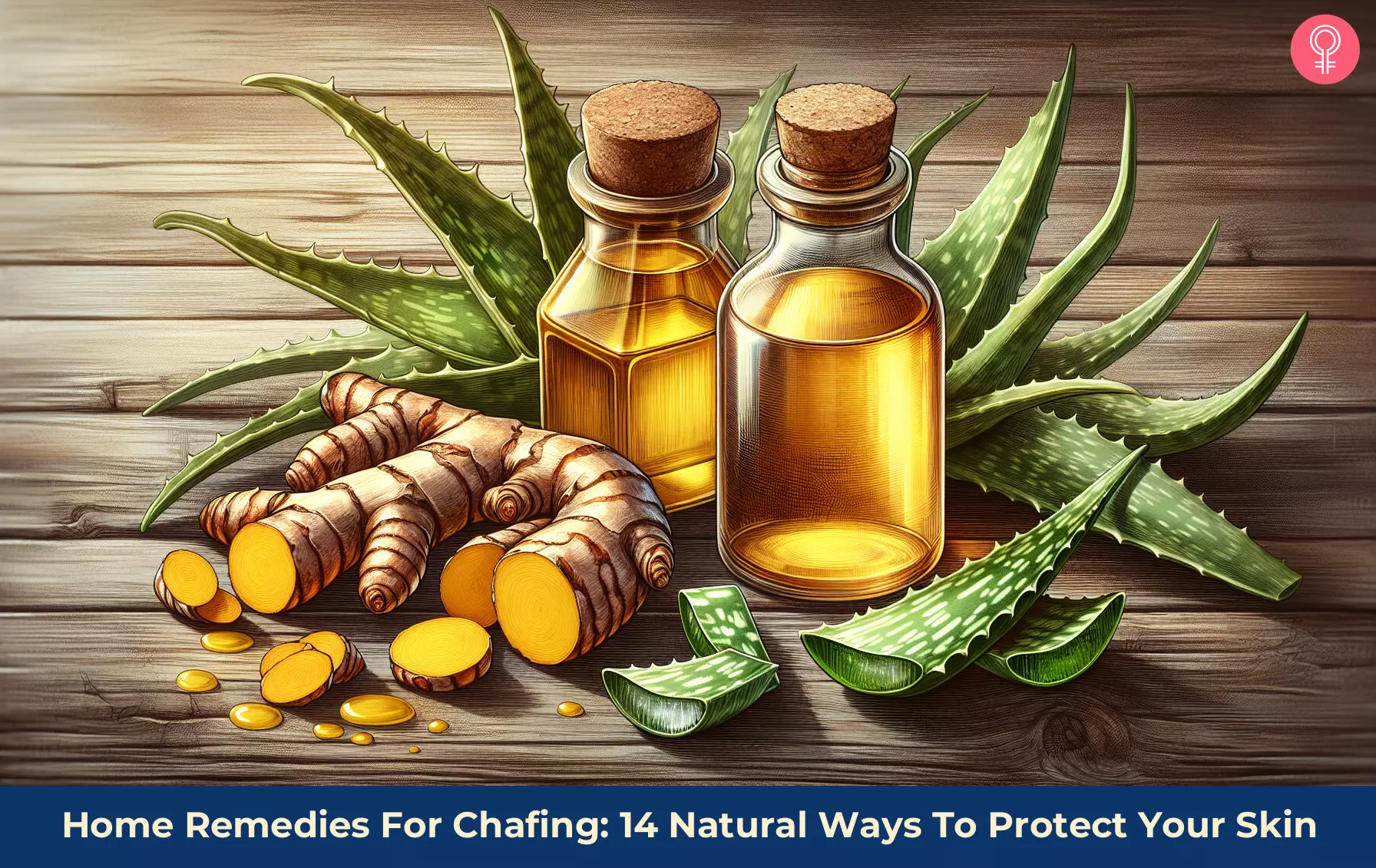
Image: Dall·E/StyleCraze Design Team
Learn nine simple home remedies to help soothe and prevent chafing of your thighs! Get relief from the discomfort and irritation of chafing today by checking out the video below.
Personal Experience: Source
StyleCraze's articles are interwoven with authentic personal narratives that provide depth and resonance to our content. Below are the sources of the personal accounts referenced in this article.
i. How to avoid chafing, sores, and other discomfort from indoor cycling classeshttps://medium.com/@dinagold/how-to-avoid-chafing-sores-and-other-discomfort-from-indoor-cycling-classes-6a1ed90580df
References
Articles on StyleCraze are backed by verified information from peer-reviewed and academic research papers, reputed organizations, research institutions, and medical associations to ensure accuracy and relevance. Read our editorial policy to learn more.
- Topical application of aloe vera accelerated wound healing modeling and remodeling: an experimental study
https://pubmed.ncbi.nlm.nih.gov/25003428/ - Virgin olive oil as a fundamental nutritional component and skin protector
https://pubmed.ncbi.nlm.nih.gov/19167997/ - Melaleuca alternifolia (tea tree) oil: a review of antimicrobial and other medicinal properties
https://www.ncbi.nlm.nih.gov/pmc/articles/PMC1360273/ - Wound healing and anti-inflammatory effect in animal models of calendula officinalis l. Growing in brazil
https://www.ncbi.nlm.nih.gov/pmc/articles/PMC3270572/ - Moisturizers: the slippery road
https://www.ncbi.nlm.nih.gov/pmc/articles/PMC4885180/ - Skin care for your baby
https://www.ncbi.nlm.nih.gov/pmc/articles/PMC2528704/ - A randomized double-blind controlled trial comparing extra virgin coconut oil with mineral oil as a moisturizer for mild to moderate xerosis
https://pubmed.ncbi.nlm.nih.gov/15724344/ - Anti-inflammatory analgesic and antipyretic activities of virgin coconut oil
https://pubmed.ncbi.nlm.nih.gov/20645831/ - Magnesium decreases inflammatory cytokine production: a novel innate immunomodulatory mechanism
https://www.ncbi.nlm.nih.gov/pmc/articles/PMC3884513/ - Anti-inflammatory activities of colloidal oatmeal (Avena sativa) contribute to the effectiveness of oats in treatment of itch associated with dry irritated skin
https://pubmed.ncbi.nlm.nih.gov/25607907/ - Avenanthramides polyphenols from oats exhibit anti-inflammatory and anti-itch activity
https://pubmed.ncbi.nlm.nih.gov/18461339/ - Anti-inflammatory properties of curcumin a major constituent of Curcuma longa: a review of preclinical and clinical research
https://pubmed.ncbi.nlm.nih.gov/19594223/ - Anti-inflammatory pro-apoptotic and anti-proliferative effects of a methanolic neem (Azadirachta indica) leaf extract are mediated via modulation of the nuclear factor-κB pathway
https://pubmed.ncbi.nlm.nih.gov/21484152/ - Effect of local cold-pack application on systemic anabolic and inflammatory response to sprint-interval training: a prospective comparative trial
https://www.ncbi.nlm.nih.gov/pmc/articles/PMC2762537/ - Corn starch Candida albicans and diaper rash
https://pubmed.ncbi.nlm.nih.gov/6387672/ - Ome remedy use among African American and white older adults
https://www.ncbi.nlm.nih.gov/pmc/articles/PMC4631220/ - Antibacterial activity of baking soda
https://pubmed.ncbi.nlm.nih.gov/12017929/ - Anti-obesity and anti-inflammatory effects of synthetic acetic acid vinegar and Nipa vinegar on high-fat-diet-induced obese mice
https://www.ncbi.nlm.nih.gov/pmc/articles/PMC5532206/ - Antimicrobial activity of apple cider vinegar against Escherichia coli Staphylococcus aureus and Candida albicans; downregulating cytokine and microbial protein expression
https://www.ncbi.nlm.nih.gov/pmc/articles/PMC5788933/ - Antioxidant function of vitamin A
https://pubmed.ncbi.nlm.nih.gov/22507/ - Vitamin C as an antioxidant: evaluation of its role in disease prevention
https://pubmed.ncbi.nlm.nih.gov/12569111/ - Vitamin C and Immune Function
https://pubmed.ncbi.nlm.nih.gov/29099763/ - A novel treatment of intertrigo in athletes and overweight subjects
https://www.ncbi.nlm.nih.gov/pmc/articles/PMC8252709/ - A systematic review and meta-analysis on the use of prophylactic topical antibiotics for the prevention of uncomplicated wound infections
https://www.ncbi.nlm.nih.gov/pmc/articles/PMC5858851/ - Petrolatum: Barrier repair and antimicrobial responses underlying this ”inert” moisturizer
https://pubmed.ncbi.nlm.nih.gov/26431582/
Read full bio of Dr. Hari Hara Sudhan
Read full bio of Shaheen Naser
Read full bio of Anjali Sayee
Read full bio of Swathi E








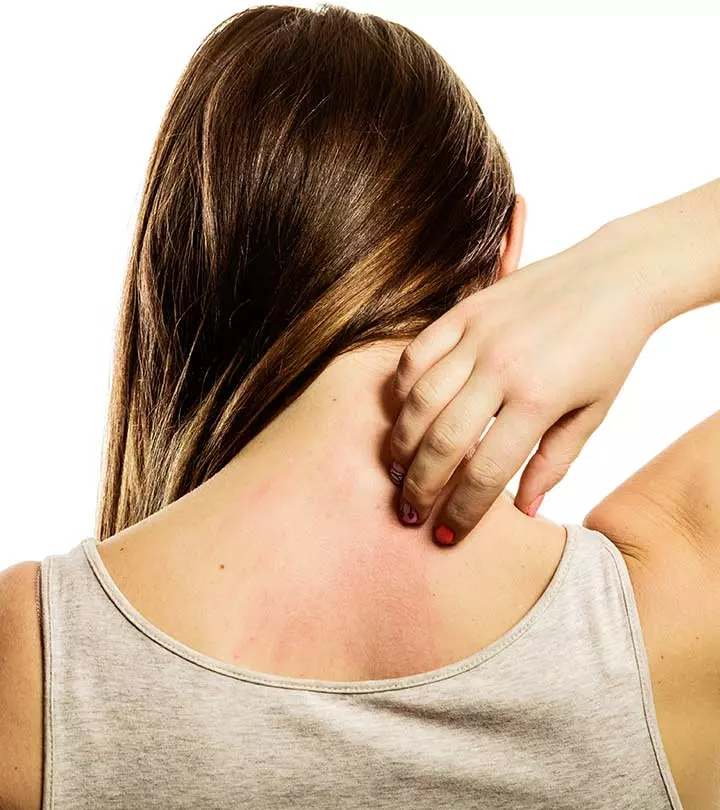
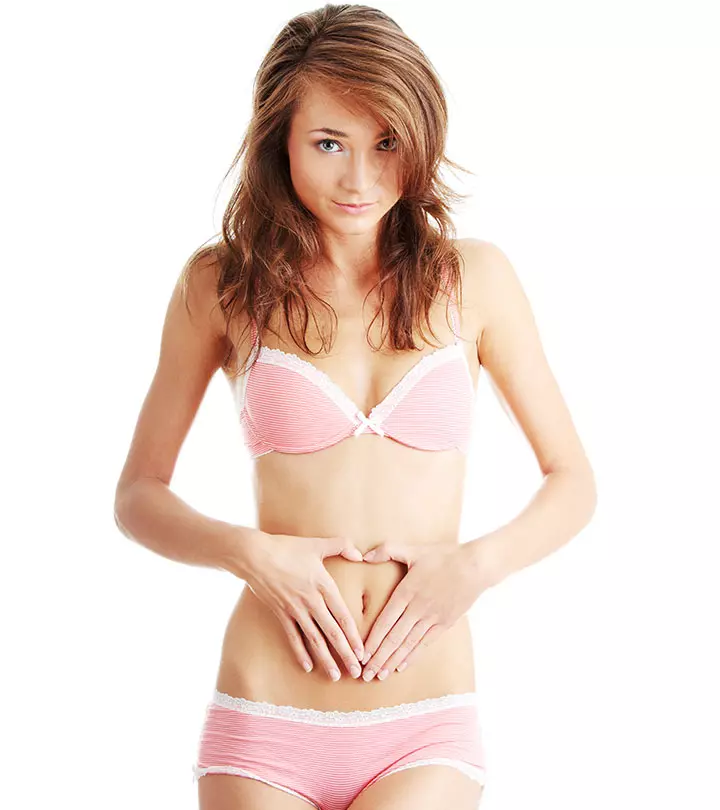
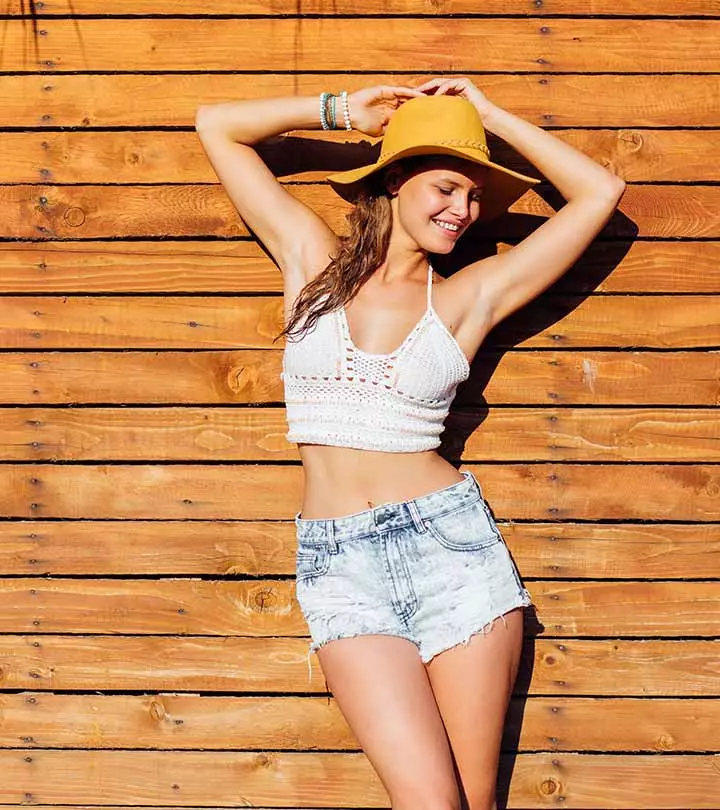

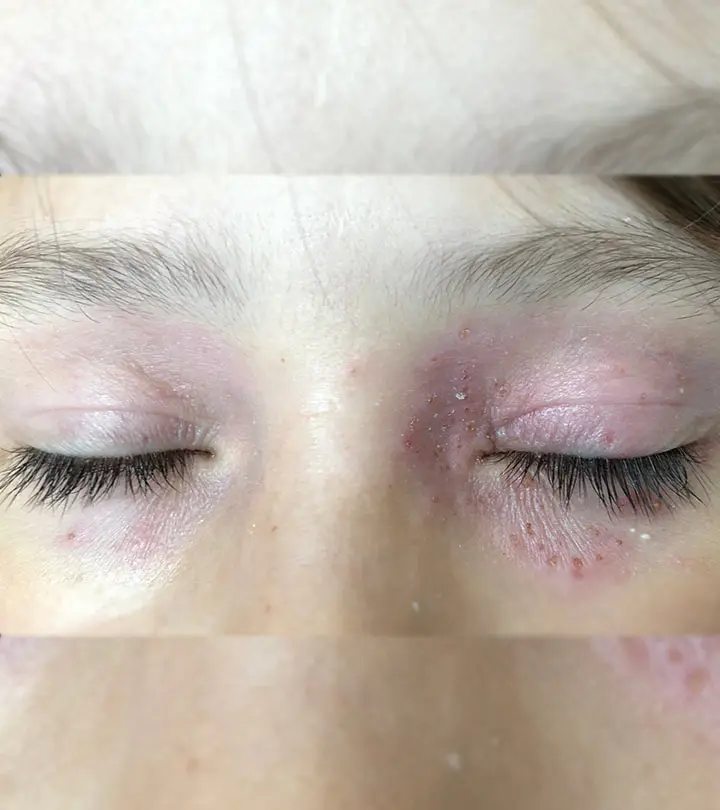

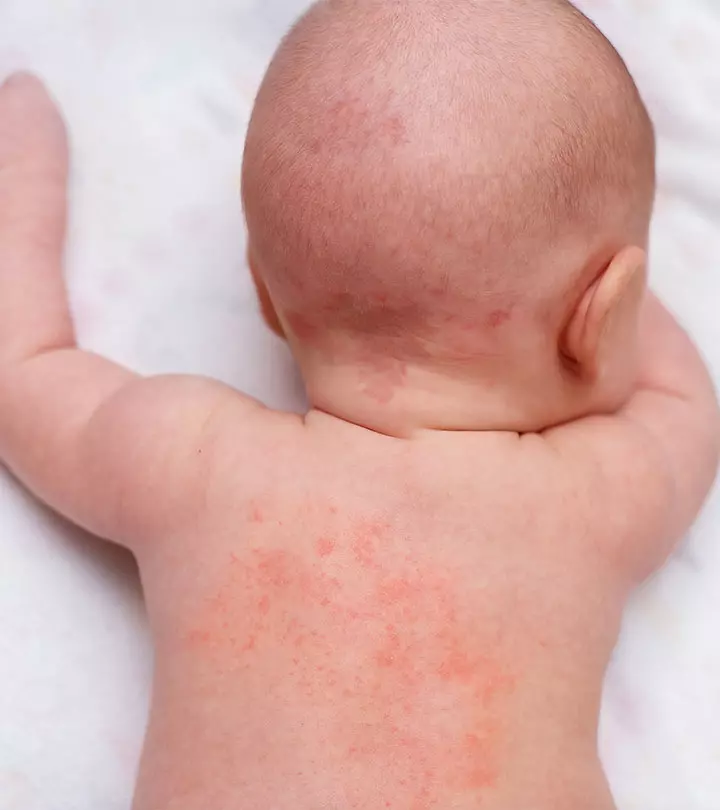
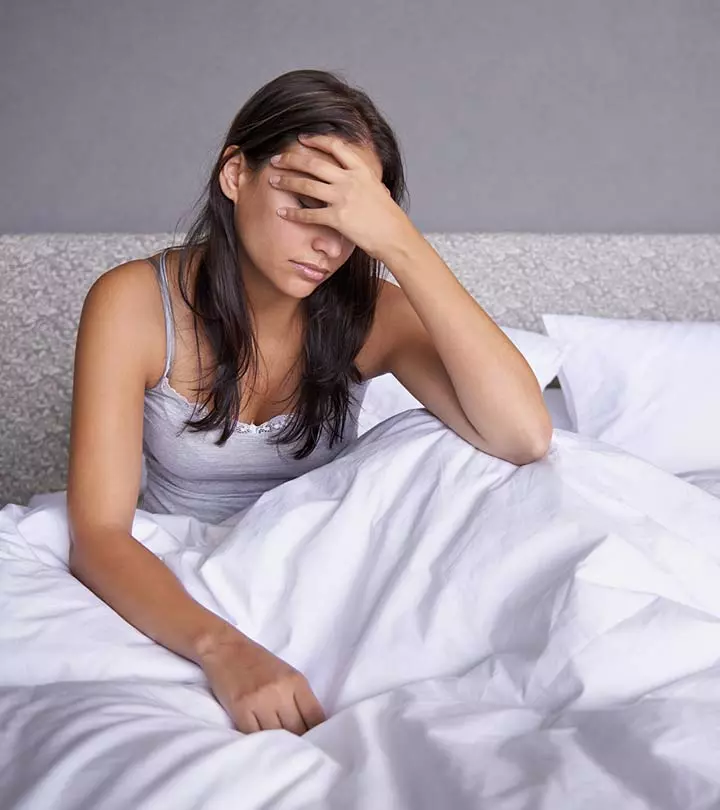



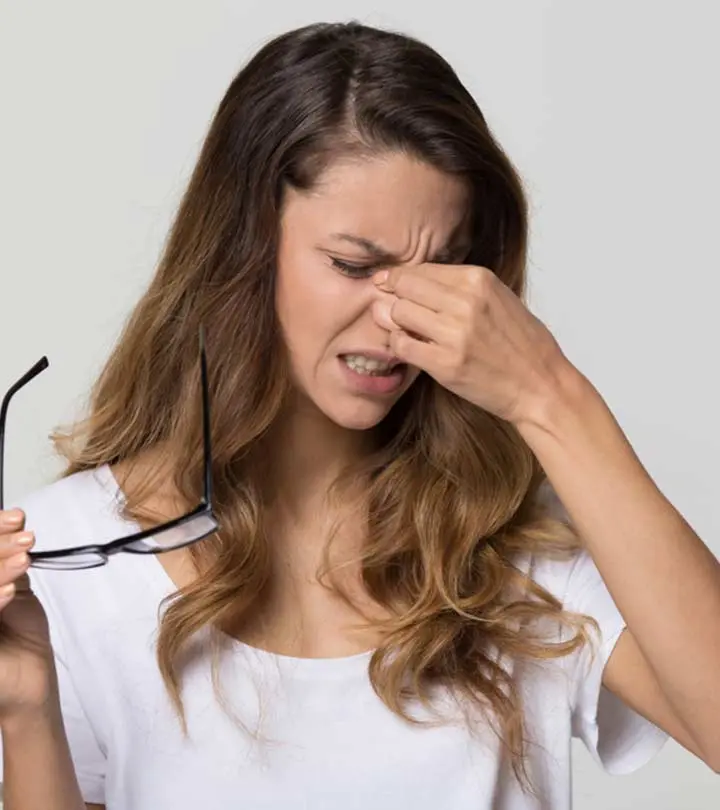




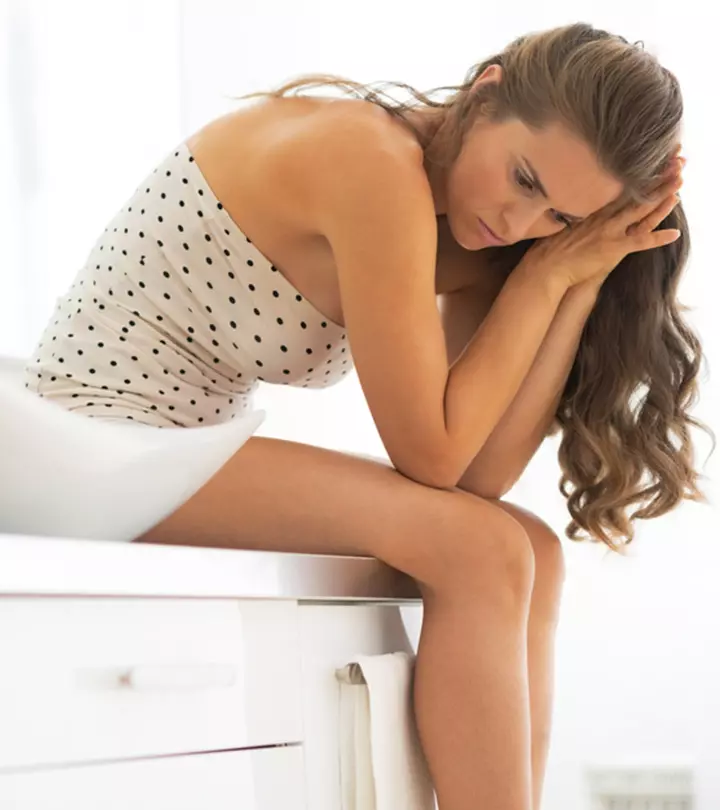


Community Experiences
Join the conversation and become a part of our empowering community! Share your stories, experiences, and insights to connect with other beauty, lifestyle, and health enthusiasts.